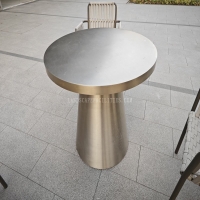Welcome to the website for landscape facilities products and knowledge.
What are the most common materials used for the glides or feet of landscape chairs, and how do they compare in wear resistance?
When selecting landscape chairs, the material of the glides or feet is often overlooked, yet it plays a crucial role in durability and performance. The most common materials used for chair glides include plastic, metal (such as aluminum or steel), rubber, and composite materials.
Plastic Glides: Lightweight and affordable, plastic glides are resistant to moisture and corrosion, making them suitable for outdoor use. However, they tend to wear down faster on rough surfaces like concrete or stone.
Metal Glides: Typically made from aluminum or steel, these glides offer superior wear resistance and stability. Aluminum is lightweight and rust-resistant, while steel provides added strength but may corrode if not properly coated.
Rubber Glides: Known for their grip and shock absorption, rubber glides are gentle on floors and reduce noise. However, they may degrade faster under UV exposure or extreme weather conditions.
Composite Glides: Combining materials like plastic and fiberglass, composites balance durability and weight. They resist wear better than pure plastic but may lack the longevity of metal.
In terms of wear resistance, metal glides generally outperform plastic and rubber, especially in high-traffic or rugged environments. For budget-friendly options, plastic or rubber may suffice, but for long-term durability, metal or composite glides are the better choice. Consider your specific needs—such as surface type and weather conditions—when selecting the ideal material for your landscape chairs.
Related search:

Recommendation
Outdoor Metal Table - Classic Outdoor Furniture, Stainless Steel Table, Durable and Reliable